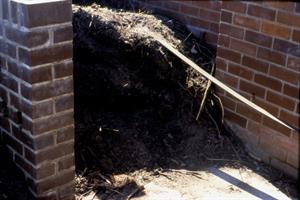Understand Soils: how to improve them to improve plant growth.
Healthy soils for a healthy future.
Learn how to manage soils in a sustainable manner -
we rely on soils for our food, gardens and landscape; understanding how to
properly manage soils without causing damage is key to sustainable use
and resilience.
- Manage the soil for the benefit of the crop and the broader ecosystem.
- Learn to investigate soil and its characteristics in relation to plant growth.
- Learn to manage and manipulate soil without causing damage.
- Understand methods on how to improve soil and modify it to grow specific crops.
Good soil conditions are critical for the healthy growth of most plants.
LEARN TO MANAGE SOILS in Gardens, Plant Nurseries, Farms.
 Understand soils and how to improve them to increase yields.
Understand soils and how to improve them to increase yields.
Nutrient levels, pH, salinity, depth, texture (properties of sand and
clay), structure (form and arrangement), porosity (air space),
consistence (the ability of soil to withstand rupture) and even colour
can affect plant growth independently or interdependently.
Over eight lessons this course will develop an understanding of
physical and chemical properties of soils, the ability to carry out
simple tests and determine soil characteristics, and to decide ways of
treating a soil to improve its ability to grow plants.
This course provides a credit in ACS qualifications, accredited
through IARC, and also prepares you to sit for modules and acquire
credits in an advanced certificate or diploma.
The course is specifically designed for ornamental gardens, landscaping, container growing, and turf situations.